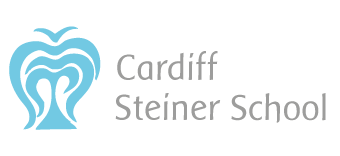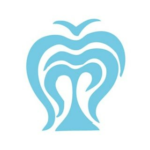Introducing Maths to Our Younger Children
13 January 2013
Whereas reading and writing is introduced relatively slowly compared to mainstream education, Steiner Education teaches maths more quickly and more deeply.

Cardiff Steiner School children age 6/7. Using manipulatives (clay counter beads they made themselves) to understand the four processes (+ - / x).
The children, in the early classes, develop a proficiency of numbers through the rhythmic movement of their hands and feet. All four processes (+ – / x) are introduced early in Class 1 (age 6-7) through fun and enlivened exercises that bring their whole bodies into movement. Counting skills are practiced and developed using a variety of movement activities to reinforce the experience of different musical intervals and rhythms -counting rhymes, jumping, skipping, singing, partners for clapping the times tables.

An introduction to numbers - the duality of ‘two-ness’, night & day
Children start in Class 1 with an introduction to the ‘qualitative’ nature of numbers that aims to establish the profound nature and fascination of numbers. Each number, 1-10, is a discussion involved in the deep intensity of imagination and looks at how numbers are revealed in the real world. They begin with the unity or ‘one-ness’ of ourselves as unique individuals. The image of ‘one sun’ proceeds to the duality or ‘two-ness’ of night and day. So from very beginning, children are aware of the significance of numbers and enter very deeply into them.
Geometry work is incorporated into the discussion of each number. The experience of forms containing straight and curved lines is introduced by forming the Roman numerals, scribing freehand the relative polygons and stars, and free modelling of shapes including flat and curved surfaces.

Geometry - the experience of forms containing straight and curved lines is introduced by forming the Roman numerals
Written arithmetic -including all four processes, number lines, place value and pattern recognition- starts with physical demonstration first, going into imaginative, then into purely computational kinds of sums. They begin to use manipulatives (here clay counters they have made) to understand the relationships the processes represent.

The children may estimate the size of collections, especially of shells, stones and nuts, arranging them in groups and patterns. Imaginative maths stories are told where the children solve the same word problems as the characters. There are early mental arithmetic games for children to develop the important skill of solving number problems in their heads.
Wherever possible, the teacher introduces new mathematical concepts by beginning first with the whole, and then moving to the parts. The interrelatedness of mathematical functions is also emphasised. Times tables might be introduced like this: 2=1×2, 4=2×2, 6=3×2, as opposed to 1×2=2, 2×2=4, 3×2=6.
During Class 2 (age 7-8) there is a move towards more arithmetical problem solving and mental arithmetic. The children will begin to handle larger numbers and number bonds, along with new mathematical concepts such as odd and even.
A genuine love of maths is enhanced by this practical approach in the early classes.
“I have been amazed at his appetite for maths, and the rapid progress he has made. In just four months he has covered what they took over a year to cover in his brother’s school. And the real difference is he loves it, and seems to have taken it in at a much more fundamental level. He ‘gets’ numbers. He even asks for extra number work he can do at home (all handwritten and tailored to him by his teacher – no printed worksheets here) and he literally can’t wait to open his book and complete them as soon as he gets home.”
Parent of a 7 year old
Cardiff Steiner School




Leave a Reply
Want to join the discussion?Feel free to contribute!